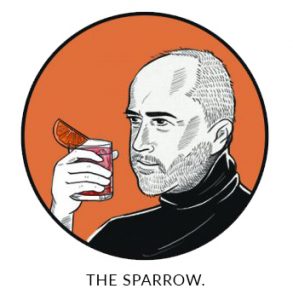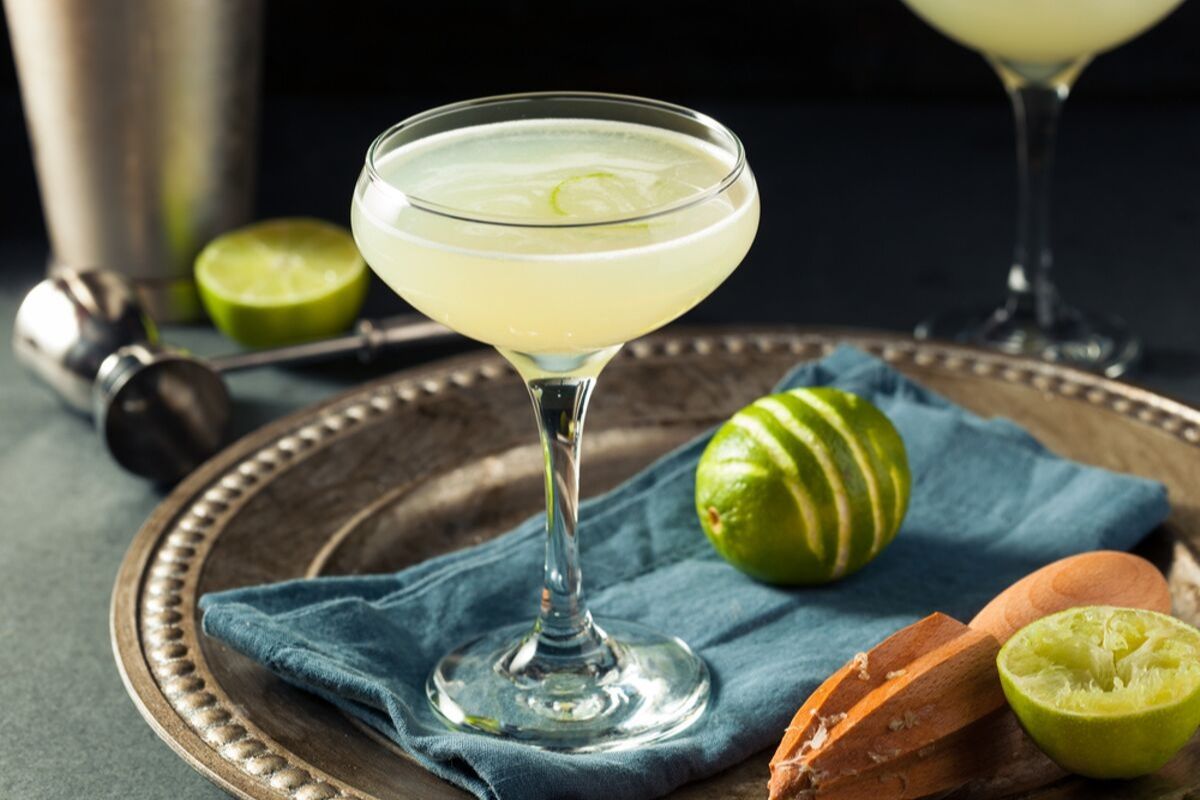There are two possible origins for the name of this cocktail: The first is that it is named after a small, sharp woodworking tool called a gimlet.
The piercing nature of the tool led to the phrase “gimlet eye” (first found in print in 1752) meaning a piercing look. In the cocktail context, it is the piercing lime that gives its name.
However, most historians side with the version that has Royal Navy Surgeon Admiral Sir Thomas Gimlette (1857-1943) as its originator. The use of citrus fruits to cure scurvy was discovered in 1753 and by the end of the century, lemon or lime juice (preserved in rum) was a regular ration for sailors. However, as the lower ranks were rationed rum the officers would drink gin. Roses lime juice cordial was invented in 1867 by Lauchlan Rose as a way of preserving lime juice without alcohol. By lucky coincidence, the 1867 Merchant Shipping Act made it mandatory for all ships to carry lime juice for the crew. Admiral Gimlette added the cordial to the gin rations and a legend was born.
The Gimlet in various forms was appearing in cocktail recipe books from the late 1920’s. The cooling properties of the drink made it very popular across the warmer parts of the British Empire. In Charles H Baker’s 1939 The Gentleman’s Companion he describes it, “throughout the whole swing of the Far East, starting with Bombay – down the Malabar Coast to Colombo; to Penang, Singapore, Hong Kong and Shanghai, the Gimlet is just as well-known as our Martini here (America).”
There were various versions including some with sugar and soda but the most often quoted recipe is in Raymond Chandler’s 1953 novel The Long Goodbye, “a real gimlet is half gin and half Rose’s lime juice and nothing else”.
The gimlet appears most often in Hemingway texts set in Africa: Green Hills of Africa; The Short Happy Life of Francis Macomber; True at First Light and Under Kilimanjaro.
The gimlet appears several times in The Green Hills of Africa (1935) which is a semi-fictional account of Hemingway’s hunting trip to Africa with wife, Pauline. During the conversation with an Austrian, Kandinsky, who doesn’t kill anything and doesn’t drink, it appears as a break in the increasingly tedious dialogue about writers and writing. After about a dozen pages of dialogue, Kandinsky says, “it is interesting what you say. Naturally, I do not agree with everything.”
Their guide, Pop, perhaps sensing it could get ugly jumps in with, “What about a gimlet?”
The conversation winds up and Kandinsky asks, “What are the things, the actual, concrete things that harm a writer?”
Hemingway answers, “Politics, women, drink, money, ambition. And the lack of politics, women, drink, money and ambition.”
The dialogue highlights a trait with Hemingway where he likes to show off but then admonishes himself for his bad behaviour. He describes his part in the conversation as “verbal dysentery.” And later in the book he calls himself a “damned show off”.
It is one of the things I like most about Hemingway. For all his faults, and he had many, he used his writing to confess his sins even as he found it difficult to do so in person.
RECIPE
60ml of London Dry Gin
30ml Roses Lime Juice Cordial (more or less to vary sweetness)
Shake well with ice and then strain into a chilled cocktail glass.
The recipe here is more palatable for modern drinkers with a 2:1 (gin: cordial) mix. Most people would find the half and half version a bit sweet – but worth a try if you want to feel like you are in a Raymond Chandler novel. Fresh lime juice may be preferable to cordial but if you are feeling more traditional try to get your hands on some Roses lime juice. However, the more easily available Bickfords is just as good.
I started my journey with the Gimlet very unsure of lime cordial in a cocktail. However, I enjoyed the cordial version much more than I thought I would. Fresh limes can be unpredictable in bitterness if not fully in season so when I got my hands on some good ones I froze the juice in 30ml ice blocks for future use.

Feature image: Gin Gimlet Cocktail. Photographed by Brent Hofacker. Image via Shutterstock.


